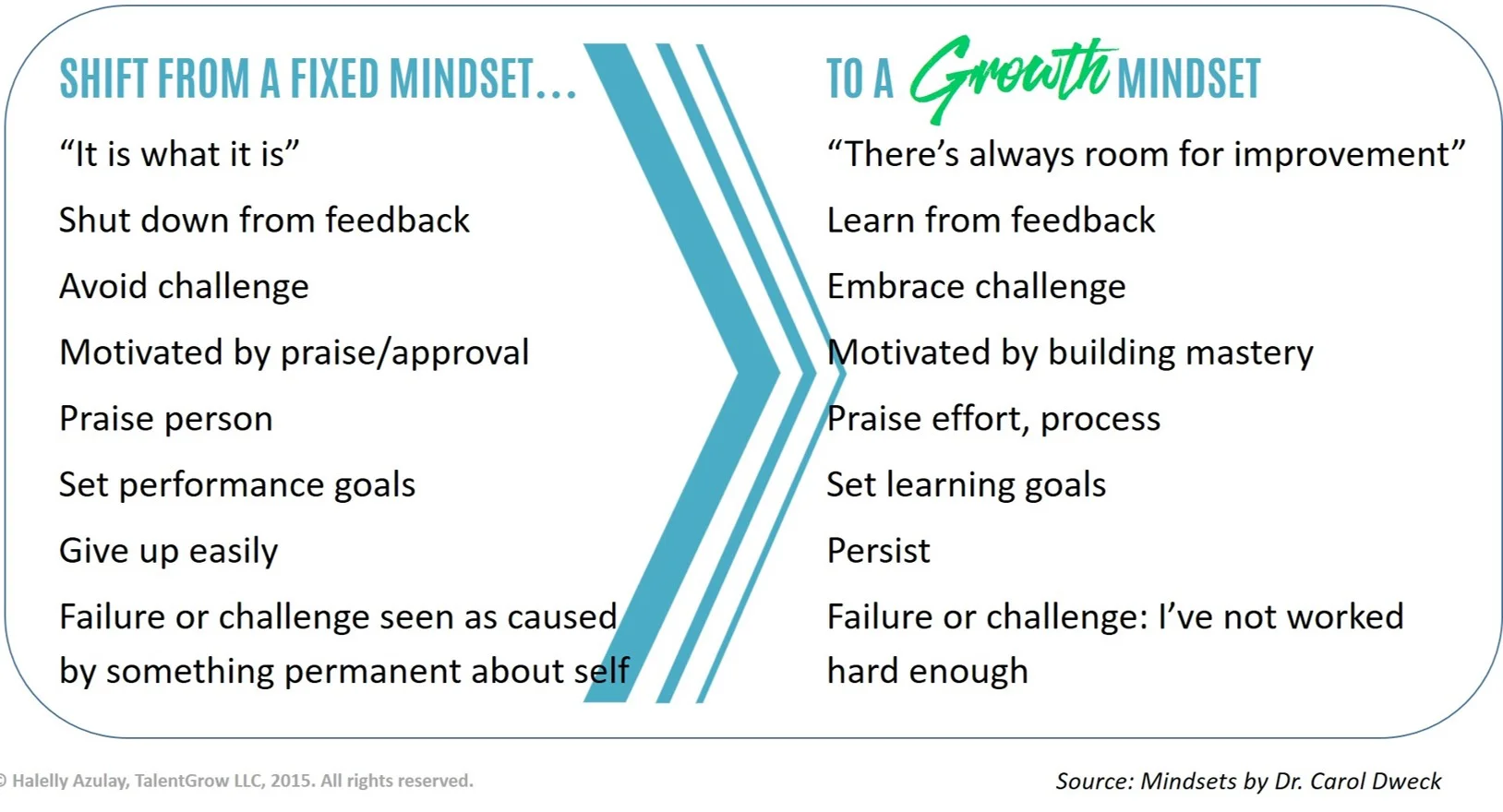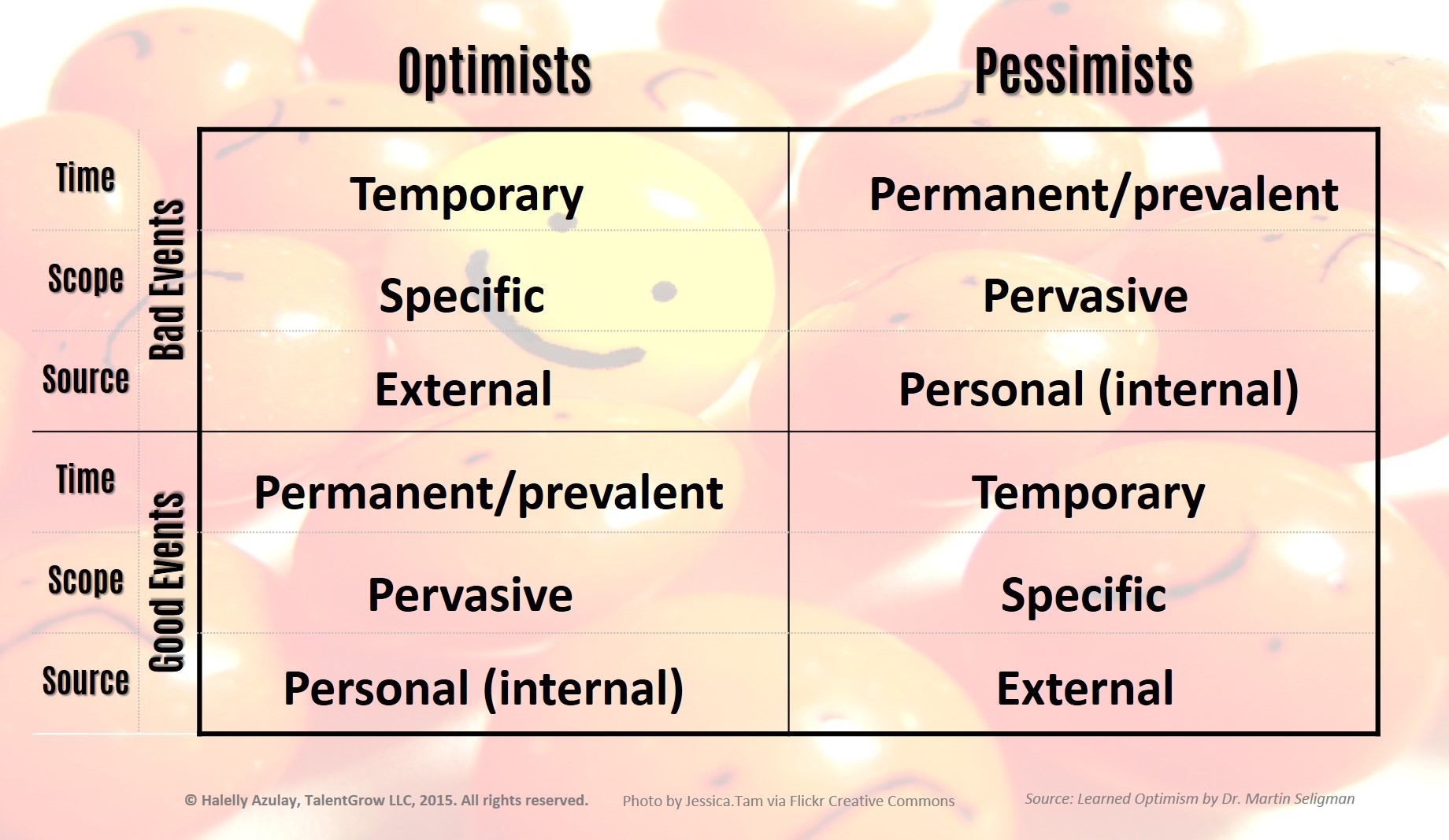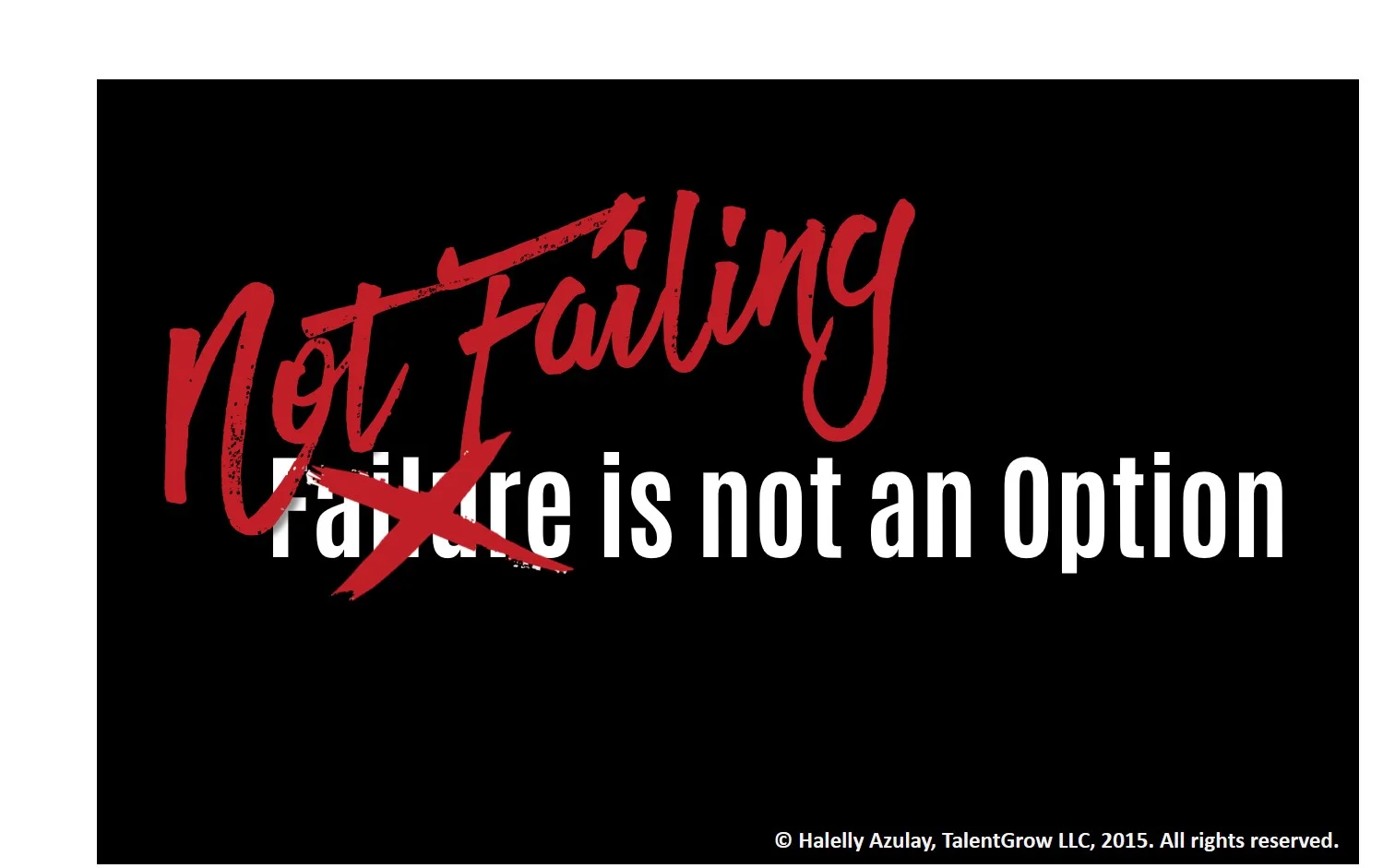The 3 secrets of the value-creator mindset
/Great achievements are not easy. Most value creators are prepared to put in lots of hard work, effort, and energy toward their important goals. But many of us are caught off-guard when we experience fear, discomfort, or major set-backs. Learning to evaluate the risk and creating the resilience and grit necessary to push ahead will generate momentum and satisfaction with the progress of the journey, not just the rewards of the final outcomes.
Here are some tips and techniques to help you overcome fear and push through the discomfort that often accompany really big breakthroughs. You’ll see that failure is not only inevitable, it’s actually something you should NOT avoid at all costs.
Start with Mindset
How you approach life affects how your life turns out. Your mindset plays a very important role in your success. Three types of mindsets to incorporate are a growth mindset, an optimistic explanatory style, and a lucky perspective on your daily experiences.
Adopt a growth mindset
According to research from Stanford University’s Dr. Carol Dweck and her colleagues, there is a big difference in how we think about ourselves and our approach to learning and goal-achievement. Dweck describes a key distinction between two different mindsets she calls a Fixed Mindset and a Growth Mindset. As I’ve explained in this vlog about having the mindset for giving and getting feedback, successful development requires that we adopt a Growth Mindset. The chart below summarizes some of the key differences in the approach of a Fixed Mindset vs. a Growth Mindset. If you don’t adopt a growth mindset, it will be very difficult for you to set big goals or to be gritty in the face of obstacles.
You can test your mindset for free here. Go check it out and report back – what did you discover?
Increase optimism
If you want to succeed, you have to believe in your ability to be successful. Having a more optimistic outlook on your life will make a huge difference. If you’re not naturally very optimistic, good news: according to extensive research by Dr. Martin Seligman from the University of Pennsylvania, optimism can be learned and increased. (and you can test it for free here). Seligman’s research shows that the ‘explanatory style’ we use to talk to ourselves (and others) about good and bad events that happen to us can indicate whether we are using an optimistic or pessimistic lens. The goal for all of us should be to adopt a more optimistic explanatory style. Here’s a chart that helps summarize the difference in how optimists and pessimists describe bad and good events in terms of their prevalence, pervasiveness, and source.
Make yourself lucky
According to research by Dr. Richard Wiseman summarized in his book, The Luck Factor, luck is not something we have or don’t have. Just like the growth mindset and optimistic mindsets described above, luck is actually something that has a lot to do with our outlook on life.
Wiseman shows that “Lucky people generate their own good fortune via four basic principles. They are skilled at creating and noticing chance opportunities, make lucky decisions by listening to their intuition, create self-fulfilling prophesies via positive expectations, and adopt a resilient attitude that transforms bad luck into good.” Source
One way to begin making yourself luckier, Wiseman suggests, is to start keeping a luck diary. Each day, look for all the lucky things that happened to you. It will force you to look at your day through a ‘lucky’ lens and help you actually reframe more of what happens as lucky. Plus, you’ll find yourself starting to look for more ways to be lucky. It’s a win-win-win!
Set Big Goals
My friend and colleague, goal-setting coach and author Caroline Adams Miller, describes this very well in her book Creating Your Best Life: too many people settle for ‘low goals’ that lead to mediocrity at best. According to Goal Setting Theory authors Dr. Edwin Locke and Dr. Gary Latham, we need to set big goals that are squarely outside our comfort zone: challenging and specific. These kinds of hard, barely doable (but not impossible) goals cause us to work hard and discover what we’re capable of much better than ‘realistic’ goals.
So set big goals that…
…are challenging and specific
…are outside your comfort zone
…S-T-R-E-T-C-H and scare you!
A great exercise suggested by Caroline Miller is called Best Possible Future Self. She described it on her recent appearance on my podcast, The TalentGrow Show, and has it available for free on her website, so check it out.
Assess risk and go for it
Many people feel paralyzed by the possibility of failure or risk. What if I don’t succeed? What if it doesn’t work out? What if I don’t make it all the way? Anything worth doing is worth taking some risk for. Nothing important is really easy to achieve. There is no such thing as risk-free big goals. So you have to get used to the fear that will inevitably creep up when you plan to accomplish hard, big goals.
Here are a few questions that can help you assess the risk of your challenge and decide if it’s worth it to go for it:
Am I going to die? Most likely, the answer is no. How bad can it be, then?
What’s the worst that can happen? Can you live with it? What’s worse – this outcome and knowing that you tried, or the pain of living with the regret and wondering ‘what if?’…
What’s the best possible outcome? Imagining pie-in-the-sky possibilities can sometimes help you decide that it’s worth a try, especially if you’re also thinking about the worst case scenario.
What’s the alternative? As I mentioned, sometimes the alternatives are not that great, especially if it’s living with regret. You can’t undo regret, but you can correct a mistake and learn from it!
Third person opinion – what would [insert person name here] say or do? Is there someone you admire for their courage, wisdom, or tenacity? Imagine them giving you advice. What would Dr. Martin Luther King say? What would Ronald Reagan say? What would Oprah say? You get the gist. Sometimes, we give great advice to others. If we adopt a different voice, perhaps we’d give ourselves great advice, too.
Why not? My friend Caroline Miller advises this in her Grit TEDx talk (see below) and I think it’s simple and profound. You doubt yourself: why me? Well, why the hell not?!?
Listen to Caroline Miller’s advice in her podcast interview with me: ask yourself this profound question: “What are the risks you haven’t taken that you know you will regret?” It should help you get over your fear of failure and go for it.
Then, Get Gritty with It
Develop Grit
According to psychologist and grit researcher Dr. Angela Duckworth, grit is defined as “passion and perseverance in pursuit of long-term goals.” Caroline Miller gave a wonderful TEDx talk about grit and in it, she gives lots of great examples of what grit looks like in action. Grit is diluted because we use it to describe things like getting up after skinning your knees or being determined for a particular event or challenge. But the idea of true grit is much more pervasive and long-held. It is much more about falling and getting back up over and over for years in pursuit of those big, challenging goals. If you want to achieve your big goals, you’ve gotta get gritty wid it!
I challenge you to take the Authentic Grit challenge on Miller’s website and develop a grittier approach to your pursuit of success in the face of inevitable obstacles, risks, and failures.
Don't be afraid to fail
Some people think that failure is not an option. I think that’s bunk. NOT failing is what’s not optional (how’s that for a double-negative). You’ve got to fail. It’s how you learn. History’s full of tales of heroes failing over and over before they finally get that breakthrough. The list goes on and on – famous successful people who failed first. As they like to say in Silicon Valley: Fail fast, fail early, fail often. It’s the only way forward. There’s nothing to be won by playing it safe.
Here’s an interesting video of an interview with Chris Hadfield, the astronaut, talking about risks worth taking (first 2min 55s). Also, you might find some inspiration by basketball legend Michael Jordan in this short commercial he shot for Nike about his experience with frequent failures.
SO: What big goals are you going to go for this month, this year, this decade? Chime in below in the comments, I’d love to hear from you!
Sign up to my free weekly newsletter and get more actionable tips and ideas for making yourself a better leader and a more effective communicator! It’s very short and relevant with quick tips, links, and news about leadership, communication, and self-development. Sign up now!
Also, subscribe to my podcast, The TalentGrow Show, on iTunes to always be the first in the know about new episodes of The TalentGrow Show! http://apple.co/1NiWyZo
You Might Also Like these Posts:
Do you have the right mindset for effective feedback?
Hope on the tarmac: How I practiced optimism and why and how you can, too
Episode 3: How to Set Good Goals, Be Happier, and Get Gritty with Caroline Adams Miller





